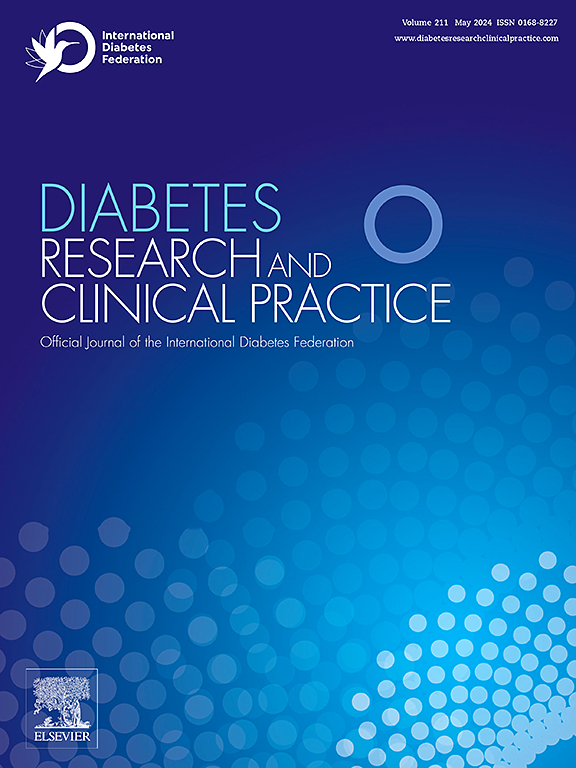先进技术使用者的睡眠质量、晚餐时间和血糖控制之间的相互作用:一项针对 1 型糖尿病成人的研究。
IF 6.1
3区 医学
Q1 ENDOCRINOLOGY & METABOLISM
引用次数: 0
摘要
本文章由计算机程序翻译,如有差异,请以英文原文为准。
Interplay among sleep quality, dinner timing, and blood glucose control in users of advanced technologies: A study in a cohort of adults with type 1 diabetes
Aims
To explore the interplay among sleep quality, dinner timing, and glycemic control in adults with type 1 diabetes (T1D) using advanced diabetes technologies.
Methods
T1D adults on automated (AID, n = 122) or non-automated (CSII, n = 67) insulin delivery systems completed the Pittsburgh Sleep Quality Index (PSQI) questionnaire. Two-week CGM-metrics, HbA1c, and post-dinner glucose control were compared by independent T-test in Good vs. Bad-sleepers (PSQI-score above 5) or in Early vs. Late-eaters (above median of the cohort’s dinner time).
Results
Time-below-range (TBR)70-54 (2.1 ± 2.0 vs. 1.3 ± 1.2 %), TBR54 (0.7 ± 1.0 vs. 0.2 ± 0.4 %), and coefficient of variation (34.4 ± 5.3 vs. 31.8 ± 5.2 %) were significantly higher in Bad-sleepers than Good-sleepers (p < 0.05 for all). Late-eaters, particularly among AID users, showed higher HbA1c and lower TBR70-54, and, after dinner, higher TAR180-250 and lower Time-in-range70-180 than Early-eaters (p < 0.05 for all). At multiple regression analysis, dinner time was a main predictor of HbA1c, and TBR54 a main predictor of sleep quality.
Conclusions
The rate of hypoglycemia and dinner timing are key factors affecting both sleep quality and glycemic control in adults with T1D. Addressing lifestyle habits, including dinner timing and fear of hypoglycemia, may still be needed in users of AID.
求助全文
通过发布文献求助,成功后即可免费获取论文全文。
去求助
来源期刊

Diabetes research and clinical practice
医学-内分泌学与代谢
CiteScore
10.30
自引率
3.90%
发文量
862
审稿时长
32 days
期刊介绍:
Diabetes Research and Clinical Practice is an international journal for health-care providers and clinically oriented researchers that publishes high-quality original research articles and expert reviews in diabetes and related areas. The role of the journal is to provide a venue for dissemination of knowledge and discussion of topics related to diabetes clinical research and patient care. Topics of focus include translational science, genetics, immunology, nutrition, psychosocial research, epidemiology, prevention, socio-economic research, complications, new treatments, technologies and therapy.
 求助内容:
求助内容: 应助结果提醒方式:
应助结果提醒方式:


